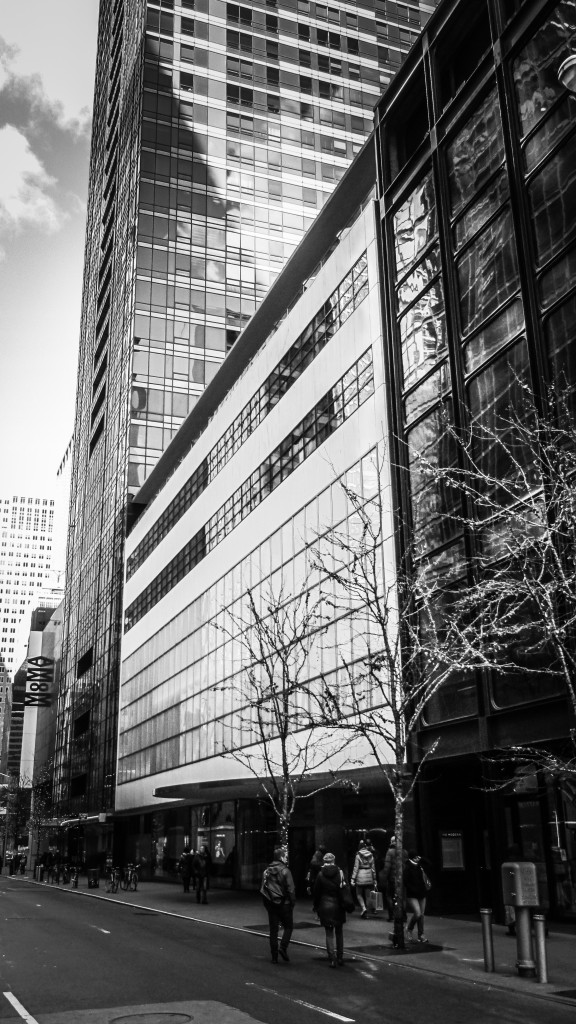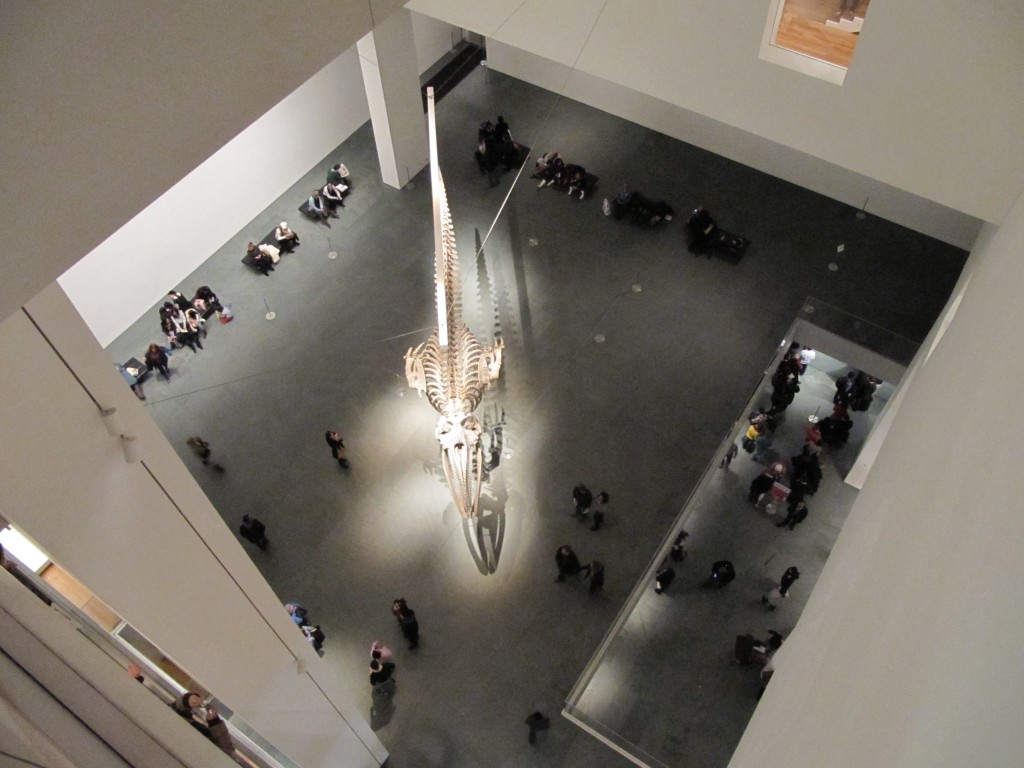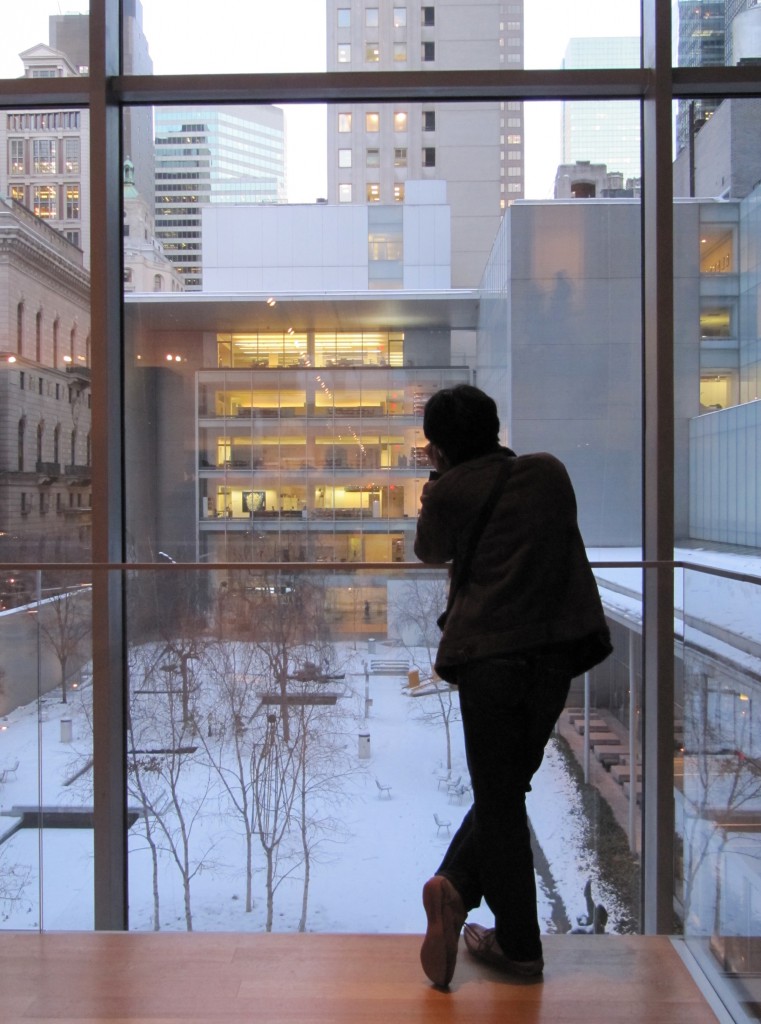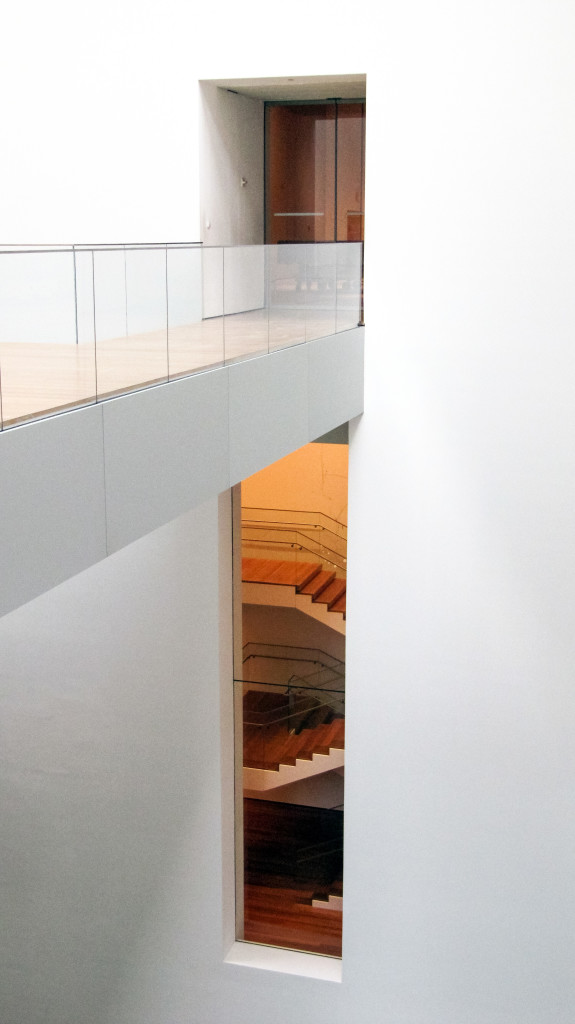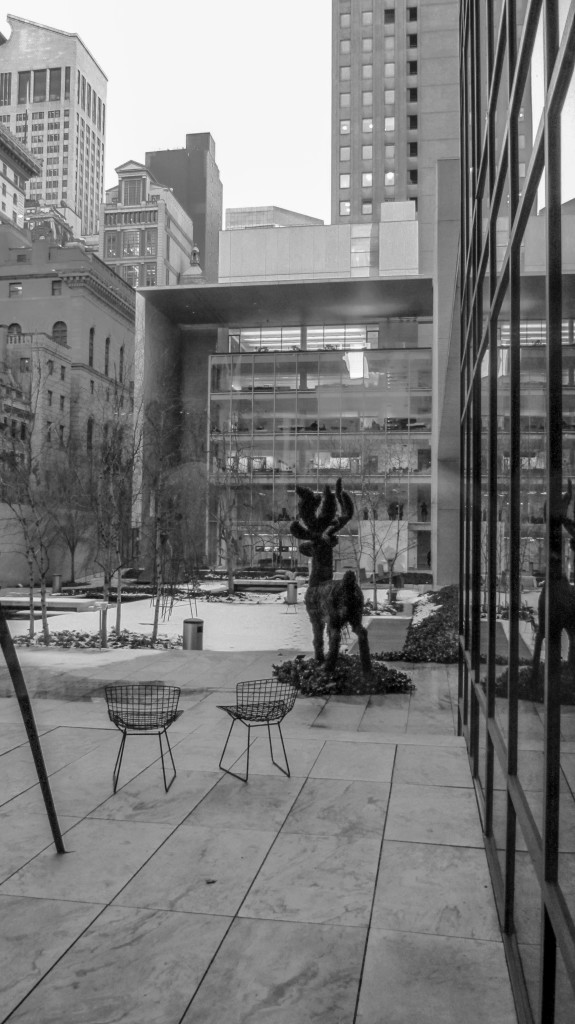The Donald B. and Catherine C. Marron Atrium
The Museum of Modern Art (MoMA) is an art museum in Midtown Manhattan in New York City, on 53rd Street, between Fifth and Sixth Avenues. It has been important in developing and collecting modernist art, and is often identified as the most influential museum of modern art in the world. The museum’s collection offers an overview of modern and contemporary art, including works of architecture and design, drawings, painting, sculpture, photography,
prints, illustrated books and artist’s books, film, and electronic media.
The idea for The Museum of Modern Art was developed in 1928 primarily by Abby Aldrich Rockefeller (wife of John D. Rockefeller Jr.) and two of her friends, Lillie P. Bliss and Mary Quinn Sullivan. They became known variously as “the Ladies”, “the daring ladies” and “the adamantine ladies”. They rented modest quarters for the new museum in the Heckscher Building at 730 Fifth Avenue (corner of Fifth Avenue and 57th Street) in Manhattan, and it opened to the public on November 7, 1929, nine days after the Wall Street Crash. Abby had invited A. Conger Goodyear, the former president of the board of trustees of the Albright Art Gallery in Buffalo, New York, to become president of the new museum. Abby became treasurer. At the time, it was America’s premier museum devoted exclusively to modern art, and the first of its kind in Manhattan to exhibit European modernism.
First housed in six rooms of galleries and offices on the twelfth floor of Manhattan’s Heckscher Building, on the corner of Fifth Avenue and 57th Street, the museum moved into three more temporary locations within the next ten years. Abby’s husband was adamantly opposed to the museum (as well as to modern art itself) and refused to release funds for the venture, which had to be obtained from other sources and resulted in the frequent shifts of location. Nevertheless, he eventually donated the land for the current site of the museum, plus other gifts over time, and thus became in effect one of its greatest benefactors.
When Abby Rockefeller’s son Nelson was selected by the board of trustees to become its flamboyant president in 1939, at the age of thirty, he became the prime instigator and funder of its publicity, acquisitions and subsequent expansion into new headquarters on 53rd Street. His brother, David Rockefeller, also joined the museum’s board of trustees, in 1948, and took over the presidency when Nelson took up position as Governor of New York in 1958.
The Abby Aldrich Rockefeller Sculpture Garden
David subsequently employed the noted architect Philip Johnson to redesign the museum garden and name it in honor of his mother, the Abby Aldrich Rockefeller Sculpture Garden. He and the Rockefeller family, in general, have retained a close association with the museum throughout its history, with the Rockefeller Brothers Fund funding the institution since 1947. Both David Rockefeller, Jr. and Sharon Percy Rockefeller (wife of Senator Jay Rockefeller) currently sit on the board of trustees. In 1937, MoMA had shifted to offices and basement galleries in the Time-Life Building in Rockefeller Center. Its permanent and current home, now renovated, designed in the International Style by the modernist architects Philip Goodwin and Edward Durell Stone, opened to the public on May 10, 1939, attended by an illustrious company of 6,000 people, and with an opening address via radio from the White House by President Franklin D. Roosevelt. In 1997 the Japanese architect Yoshio Taniguchi beat out ten other international architects to win the competition to execute the redesign of the museum, which after being closed in Manhattan for a time during the process (a temporary space was opened in Long Island City, Queens) reopened in 2004. Wish Tree, Yoko Ono‘s installation in the Sculpture Garden (since July 2010), has become very popular with contributions from all over the world.
MoMA’s midtown location underwent extensive renovations in the early 2000s, closing on May 21, 2002, and reopening to the public in a building redesigned by the Japanese architect Yoshio Taniguchi along with Kohn Pedersen Fox, on November 20, 2004. From June 29, 2002, until September 27, 2004, a portion of its collection was on display in what was dubbed MoMA QNS, a former Swingline staple factory in Long Island City, Queens.
Stair visible from The Donald B. and Catherine C. Marron Atrium
The expansion, including an increase in MoMA’s endowment to cover operating expenses, cost $858 million in total. The project nearly doubled the space for MoMA’s exhibitions and programs and features 630,000 square feet (59,000 m2) of new and redesigned space. The Peggy and David Rockefeller Building on the western portion of the site houses the main exhibition galleries, and The Lewis B. and Dorothy Cullman Education and Research Building on the eastern portion provides over five times more space for classrooms, auditoriums, teacher training workshops, and the museum’s expanded Library and Archives. These two buildings frame the enlarged Abby Aldrich Rockefeller Sculpture Garden.
The architecture of the renovation is controversial. At its opening, some critics thought that Taniguchi’s design was a fine example of contemporary architecture, while many others were extremely displeased with certain aspects of the design, such as the flow of the space.
(description: excerpts from Wikipedia)

